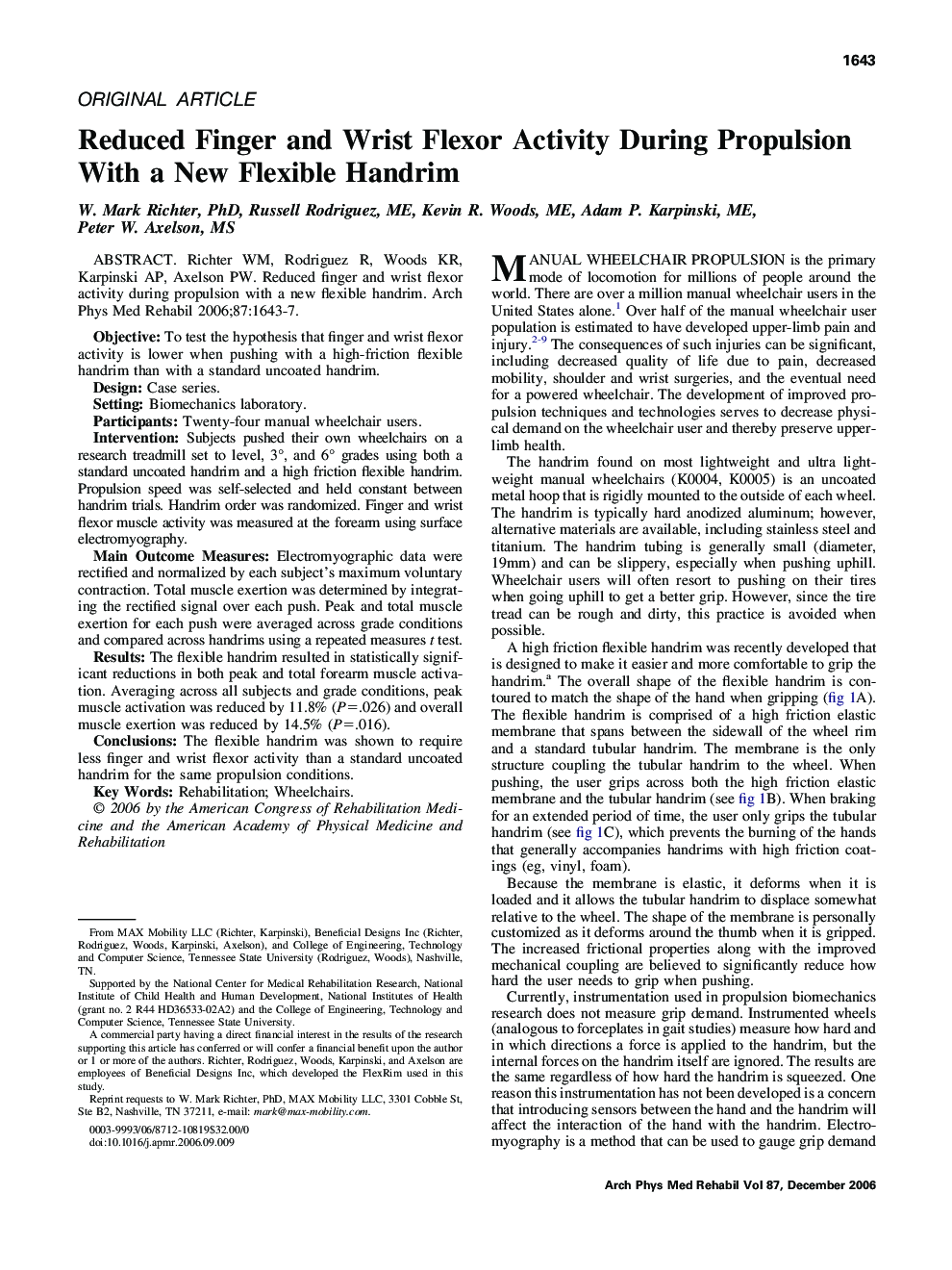| Article ID | Journal | Published Year | Pages | File Type |
|---|---|---|---|---|
| 3452410 | Archives of Physical Medicine and Rehabilitation | 2006 | 5 Pages |
Richter WM, Rodriguez R, Woods KR, Karpinski AP, Axelson PW. Reduced finger and wrist flexor activity during propulsion with a new flexible handrim.ObjectiveTo test the hypothesis that finger and wrist flexor activity is lower when pushing with a high-friction flexible handrim than with a standard uncoated handrim.DesignCase series.SettingBiomechanics laboratory.ParticipantsTwenty-four manual wheelchair users.InterventionSubjects pushed their own wheelchairs on a research treadmill set to level, 3°, and 6° grades using both a standard uncoated handrim and a high friction flexible handrim. Propulsion speed was self-selected and held constant between handrim trials. Handrim order was randomized. Finger and wrist flexor muscle activity was measured at the forearm using surface electromyography.Main Outcome MeasuresElectromyographic data were rectified and normalized by each subject’s maximum voluntary contraction. Total muscle exertion was determined by integrating the rectified signal over each push. Peak and total muscle exertion for each push were averaged across grade conditions and compared across handrims using a repeated measures t test.ResultsThe flexible handrim resulted in statistically significant reductions in both peak and total forearm muscle activation. Averaging across all subjects and grade conditions, peak muscle activation was reduced by 11.8% (P=.026) and overall muscle exertion was reduced by 14.5% (P=.016).ConclusionsThe flexible handrim was shown to require less finger and wrist flexor activity than a standard uncoated handrim for the same propulsion conditions.
